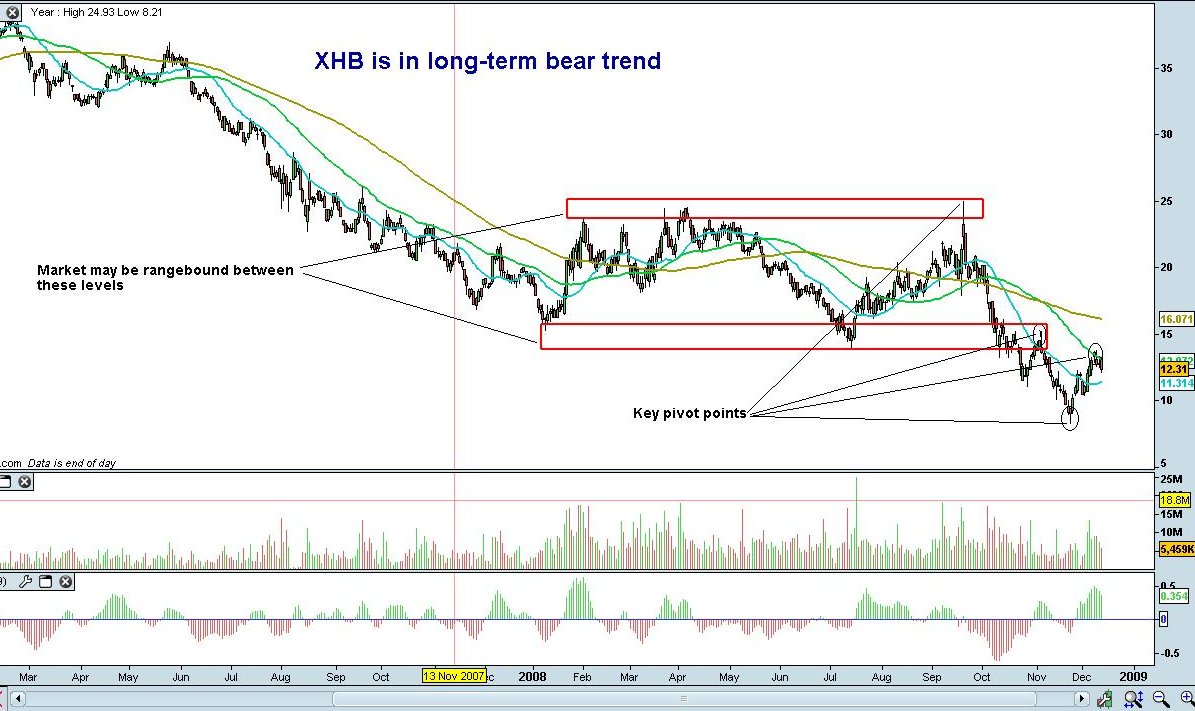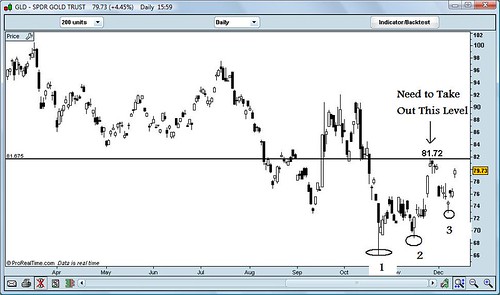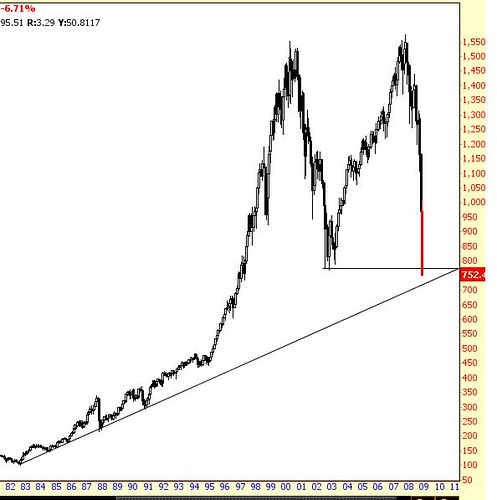As we enter the final month of 2008, it's time to start thinking about what will be hot in 2009. To start that off, I want to
revisit this post I made in late September of 2008 -- a little more than two months ago -- regarding preserving your wealth in our current economic downturn. Here's a reassessment of that view:
1. My macroeconomic view remains unchanged; I still view what we're in as an inflationary depression. I grossly underestimated, though, the size of the deflationary forces, which currently are reigning supreme. Accordingly, I think we'll see deflation continue through much of next year. However, I do expect inflation to resume, perhaps some time in the second half of 2009, and I expect it to come back fairly sharply when it does.
2. I previously recommended foreign
bond ETFs, particularly Asian
bond ETFs like
FAX, and still think they are a good buy and hold, and will do well once inflationary trends resume. However, for as long as we are seeing dollar strengthening, it will not do well -- and thus it has not done well for the latter part of 2008, and I would expect the bear trend to continue into the first half of 2009. If you're a trend follower -- which I am for everything aside from precious metals -- then you'll want to wait until the trend resumes. If you're a buy and hold type of person, now might be a time to do some bargain shopping.
3. I also recommended
VEU, an ETF of foreign
stocks designed to diversify against systemic US risk. I think this was an error on my part; while
VEU could do well, I'm not particularly confident in it. Previously, I underestimated the size of deflationary forces not only in the US, but also in the rest of the world. I should note, though, that those who are interested in comprehensive risk diversification may still find some value in
VEU.
4. My worst call was
FXE, an ETF tracking the Euro. While I knew the Eurozone had problems, I underestimated the size of those problems, and I thought the Euro could replace the US dollar as the world reserve currency. While I expect the US dollar to lose its world reserve status, I no longer think the Euro stands much of a chance to replace it. I think things will just become more free-floating. A by-product of this will be that forex will become a more important market. With that in mind, I'm not interested in
FXE, though as a currency trader with experience in trading EURUSD, I will probably trade EURUSD once I see signs of an uptrend resuming.
5. All forms of gold I am still bullish on -- very bullish, even more so than before. In terms of ETFs, that means
GLD and
GDX, the latter of which tracks gold mining
stocks. As I noted, I always favor trend-following trading as a safer form of
money management, but for gold, I make an exception. It's too volatile to predict and I'm extremely bullish on it, and so I am a buyer and a holder. All of that could change if gold starts to trade on COMEX below 650 US dollars, though gold has been holding up quite well against the US dollar during our current episode of deflation, so I would be a bit surprised if a break below that level is sustained.
6. The same holds true for silver, the ETF for which is
SLV. I'm very bullish and still a buyer at these prices. At this point, I expect to hold gold and silver until at least 2013.
7. I previously was very bullish on oil, the ETF equivalent being
USO. I view oil and the US dollar as inversely correlated in our current times, and thus I am still bullish on
USO -- though it's in the same boat as my other dollar-hedge ideas, in that it is a buy and hold, and thus will require some patience until we see inflationary trends resume in 2009 or 2010.
8. I am still bullish on commodities, and thus think
DBC is a good buy and hold for
stock market investors. Commodities do not, however, do well during dollar strengthening, though when inflation resumes, I expect commodities to lead the way and outperform most others, save currencies and metals.
Some ETFs for the Deflationists in All of UsI previously commented on
what I think will do well in deflation, and as I expect deflation to continue into at least the first half of 2009, I still like inverse ETFs that let you short sectors and indices.
SKF and
SDS I am particularly fond of, and given
Mike Shedlock's recent comments and what we've seen thus far, I'd add
SRS to that list.
The Japanese Yen: Transcending the Inflation vs. Deflation ParadigmSince we entered the sharp deflationary trends in September, all I've traded on a short-term basis is the yen (I've been accumulating gold and silver during this time as well, but for the long-term). This has worked out very well for me, and the Japanese Yen is a currency I expect to continue to do well, and thus look for trend-following opportunities to trade Yen strength -- particularly against the US dollar.
Money Management in 2009 and Beyond One of the most dominant trends we've seen since September of 2008 -- which, for me, marks the beginning of the psychological shift in the marketplace, to where bearishness became the dominant mindset -- is greater volatility. Greater volatility makes
money management and short-term trading even more appealing. I expect these trends to continue and be with us for quite some time.
Discuss this article on InformedTrades










 Conversely, it would lead to greater focus on profitability rather than financial ratios, and a corresponding focus on dividends rather than valuations.
Conversely, it would lead to greater focus on profitability rather than financial ratios, and a corresponding focus on dividends rather than valuations.